Treasurer of the United States
The Treasurer of the United States is an official in the United States Department of the Treasury who was originally charged with the receipt and custody of government funds, though many of these functions have been taken over by different bureaus of the Department. The Treasurer remains the depositary officer of the United States with regard to deposits of gold, Special Drawing Rights, and financial gifts to the Library of Congress.[1][2] As such, the office has nominal oversight of the United States Bullion Depository. The Treasurer's signature appears together with that of the Secretary of the Treasury on all Federal Reserve Notes.
| Treasurer of the United States | |
|---|---|
Incumbent Vacant since January 14, 2020 | |
| Appointer | The President |
| Formation | September 6, 1777 |
Responsibility for oversight of the Bureau of Engraving and Printing, the United States Mint, and the United States Savings Bonds Division (now the Savings Bond Marketing Office within the Bureau of the Public Debt) was assigned to the Treasurer in 1981. In 2002 the Office of the Treasurer underwent a major reorganization that removed these formal oversight duties. The Treasurer now advises the Director of the Mint, the Director of the Bureau of Engraving and Printing, the Secretary, and the Deputy Secretary of the Treasury on matters relating to coinage, currency and the production of other instruments by the United States.[3]
President Harry S. Truman appointed Georgia Neese Clark as the first female Treasurer in 1949. Since then, every subsequent Treasurer has been a woman, and seven of the past eleven Treasurers have also been Hispanic.
The requirement of Senate confirmation for the appointment was dropped in August 2012.[4]
In the last 100 years, the length of time the office has been vacant totals more than 4,000 days or eleven years.
List of Treasurers
| No. | Name | Term of office | President(s) served under |
|---|---|---|---|
| 1 | .jpg.webp) Michael Hillegas |
July 29, 1775 – September 11, 1789 (14 years, 44 days) |
George Washington (also served under Confederation Congress) |
| Hillegas served jointly with George Clymer until August 6, 1776. The title of the office was "Treasurer of the United Colonies" until May 1777.[5] | |||
| 2 | Samuel Meredith | September 11, 1789 – December 1, 1801 (12 years, 81 days) |
George Washington John Adams Thomas Jefferson |
| 3 | .jpg.webp) Thomas T. Tucker |
December 1, 1801 – May 2, 1828 (26 years, 153 days) (served the longest term) |
Thomas Jefferson James Madison James Monroe John Quincy Adams |
| 33 days vacant | |||
| 4 | 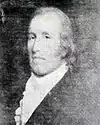 William Clark |
June 4, 1828 – May 26, 1829 (356 days) |
John Quincy Adams Andrew Jackson |
| 5 | John Campbell | May 26, 1829 – July 20, 1839 (10 years, 55 days) |
Andrew Jackson Martin Van Buren |
| 2 days vacant | |||
| 6 | William Selden | July 22, 1839 – November 23, 1850 (11 years, 124 days) |
Martin Van Buren William Henry Harrison John Tyler James K. Polk Zachary Taylor Millard Fillmore |
| 4 days vacant | |||
| 7 | 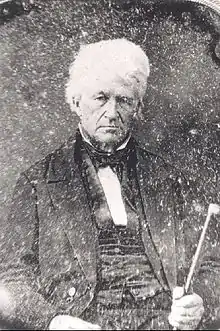 John Sloane |
November 27, 1850 – April 1, 1853 (2 years, 125 days) |
Millard Fillmore Franklin Pierce |
| 3 days vacant | |||
| 8 | Samuel L. Casey | April 4, 1853 – December 22, 1859 (6 years, 262 days) |
Franklin Pierce James Buchanan |
| 68 days vacant | |||
| 9 | 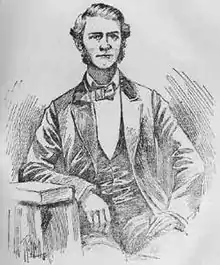 William C. Price |
February 28, 1860 – March 21, 1861 (1 year, 21 days) |
James Buchanan Abraham Lincoln |
| 10 |  Francis E. Spinner |
March 16, 1861 – July 30, 1875 (14 years, 136 days) |
Abraham Lincoln Andrew Johnson Ulysses S. Grant |
| 11 | 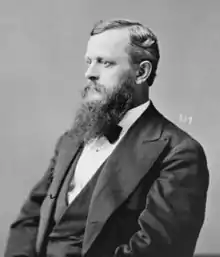 John C. New |
June 30, 1875 – July 1, 1876 (1 year, 1 day) |
Ulysses S. Grant |
| 12 | 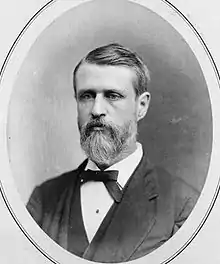 .jpg.webp) A. U. Wyman |
July 1, 1876 – June 30, 1877 (364 days) |
Ulysses S. Grant Rutherford B. Hayes |
| 13 | 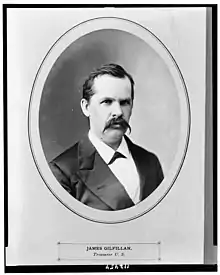 James Gilfillan |
July 1, 1877 – March 31, 1883 (5 years, 273 days) |
Rutherford B. Hayes James A. Garfield Chester A. Arthur |
| 14 |  .jpg.webp) A. U. Wyman |
April 1, 1883 – April 30, 1885 (2 years, 29 days) |
Chester A. Arthur Grover Cleveland |
| 15 | Conrad N. Jordan |
May 1, 1885 – March 23, 1887 (1 year, 326 days) |
Grover Cleveland |
| 62 days vacant | |||
| 16 | 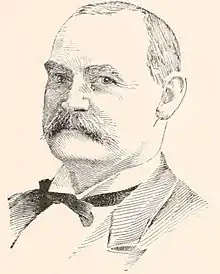 James W. Hyatt |
May 24, 1887 – May 10, 1889 (1 year, 351 days) |
Grover Cleveland Benjamin Harrison |
| 17 | 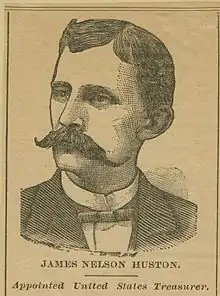 James N. Huston |
May 11, 1889 – April 24, 1891 (1 year, 348 days) |
Benjamin Harrison |
| 18 | Enos H. Nebecker |
April 25, 1891 – May 31, 1893 (2 years, 36 days) |
Benjamin Harrison Grover Cleveland |
| 19 | -retouched.jpg.webp) Daniel N. Morgan |
June 1, 1893 – June 30, 1897 (4 years, 29 days) |
Grover Cleveland William McKinley |
| 20 | 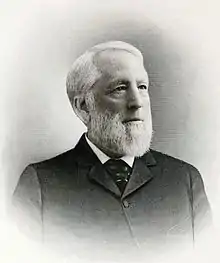 Ellis H. Roberts |
July 1, 1897 – June 30, 1905 (7 years, 364 days) |
William McKinley Theodore Roosevelt |
| 21 | Charles H. Treat |
July 1, 1905 – October 30, 1909 (4 years, 121 days) |
Theodore Roosevelt William Howard Taft |
| 22 | 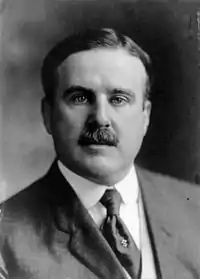 Lee McClung |
November 1, 1909 – November 21, 1912 (3 years, 20 days) |
William Howard Taft |
| 23 | 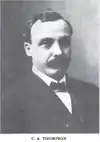 Carmi A. Thompson |
November 22, 1912 – March 31, 1913 (129 days) (served the shortest term) |
William Howard Taft Woodrow Wilson |
| 24 |  John Burke |
April 1, 1913 – January 5, 1921 (7 years, 279 days) |
Woodrow Wilson |
| 117 days vacant | |||
| 25 | 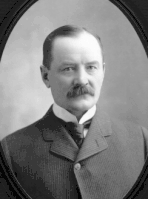 Frank White |
May 2, 1921 – May 1, 1928 (6 years, 365 days) |
Warren G. Harding Calvin Coolidge |
| 30 days vacant | |||
| 26 | Harold Theodore Tate |
May 31, 1928 – January 17, 1929 (231 days) |
Calvin Coolidge |
| 27 | W. O. Woods |
January 18, 1929 – May 31, 1933 (4 years, 133 days) |
Calvin Coolidge Herbert Hoover Franklin Delano Roosevelt |
| 28 | 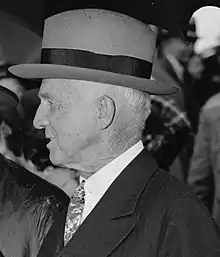 William Alexander Julian |
June 1, 1933 – May 29, 1949 (15 years, 362 days) |
Franklin D. Roosevelt Harry S. Truman |
| 23 days vacant | |||
| 29 | 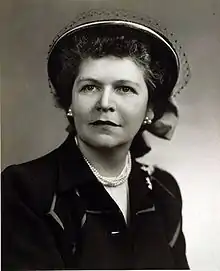 Georgia Neese Clark |
June 21, 1949 – January 27, 1953 (3 years, 220 days) |
Harry S. Truman Dwight D. Eisenhower |
| 30 | Ivy Baker Priest |
January 28, 1953 – January 29, 1961 (8 years, 1 day) |
Dwight D. Eisenhower John F. Kennedy |
| 31 | Elizabeth Rudel Smith |
January 30, 1961 – April 13, 1962 (1 year, 73 days) |
John F. Kennedy |
| 265 days vacant | |||
| 32 | 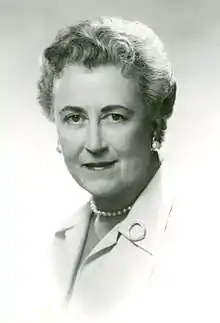 Kathryn O'Hay Granahan |
January 3, 1963 – November 22, 1966 (3 years, 323 days) |
John F. Kennedy Lyndon B. Johnson |
| 898 days vacant | |||
| 33 | Dorothy Andrews Elston[6] | May 8, 1969 – July 3, 1971 (2 years, 56 days) |
Richard Nixon |
| 167 days vacant | |||
| 34 | 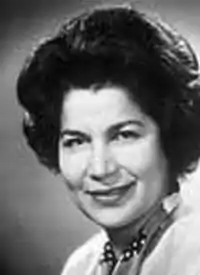 Romana Acosta Bañuelos |
December 17, 1971 – February 14, 1974 (2 years, 59 days) |
Richard Nixon |
| 127 days vacant | |||
| 35 | Francine Irving Neff |
June 21, 1974 – January 19, 1977 (2 years, 212 days) |
Richard Nixon Gerald Ford |
| 236 days vacant | |||
| 36 | 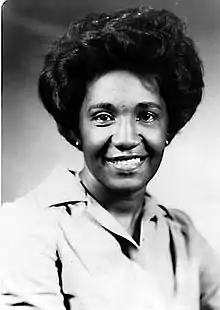 Azie Taylor Morton |
September 12, 1977 – January 20, 1981 (3 years, 130 days) |
Jimmy Carter |
| 56 days vacant | |||
| 37 | Angela Marie Buchanan |
March 17, 1981 – July 5, 1983 (2 years, 110 days) |
Ronald Reagan |
| 79 days vacant | |||
| 38 | Katherine D. Ortega |
September 22, 1983 – July 1, 1989 (5 years, 282 days) |
Ronald Reagan George H. W. Bush |
| 163 days vacant | |||
| 39 | Catalina Vasquez Villalpando |
December 11, 1989 – January 20, 1993 (3 years, 40 days) |
George H. W. Bush |
| 405 days vacant | |||
| 40 |  Mary Ellen Withrow |
March 1, 1994 – January 20, 2001 (6 years, 325 days) |
Bill Clinton |
| 208 days vacant | |||
| 41 |  Rosario Marin |
August 16, 2001 – June 30, 2003 (1 year, 318 days) |
George W. Bush |
| 569 days vacant | |||
| 42 |  Anna Escobedo Cabral |
January 19, 2005 – January 20, 2009 (4 years, 1 day) |
George W. Bush |
| 198 days vacant | |||
| 43 |  Rosa Gumataotao Rios |
August 6, 2009 – July 11, 2016 (6 years, 340 days) |
Barack Obama |
| 343 days vacant | |||
| 44 | .jpg.webp) Jovita Carranza[7] |
June 19, 2017 – January 14, 2020 (2 years, 209 days) |
Donald Trump |
| Vacant as of January 14, 2020 | |||
See also
References
- : Deposits of gold coin, gold certificates, and Special Drawing Right certificates with United States Treasurer
- : Funds of Library of Congress Trust Fund Board; management of
- "About: The Treasurer", United States Department of the Treasury website.
- Carey, Maeve P., Presidential Appointments, the Senate's Confirmation Process, and Changes Made in the 112th Congress, Congressional Research Service, Oct. 9, 2012.
- US Treasury website "History of the Treasury"
- Treasurers of the United States
- "President Donald J. Trump Announces Key Additions to his Administration" Archived 2017-05-17 at the Wayback Machine, The White House, April 28, 2017. Retrieved 2017-04-28.
